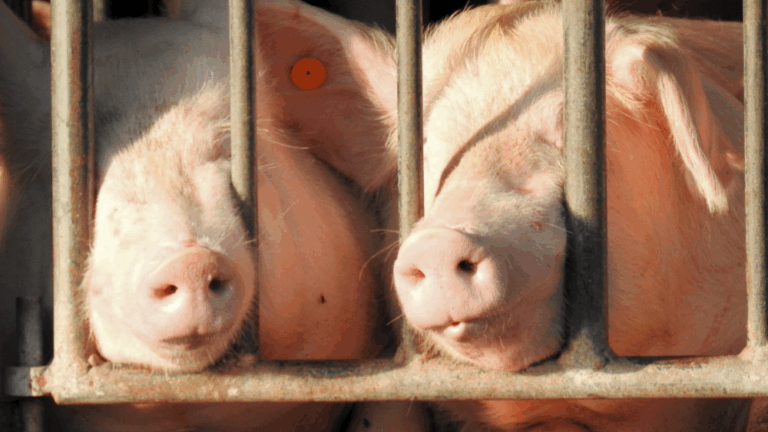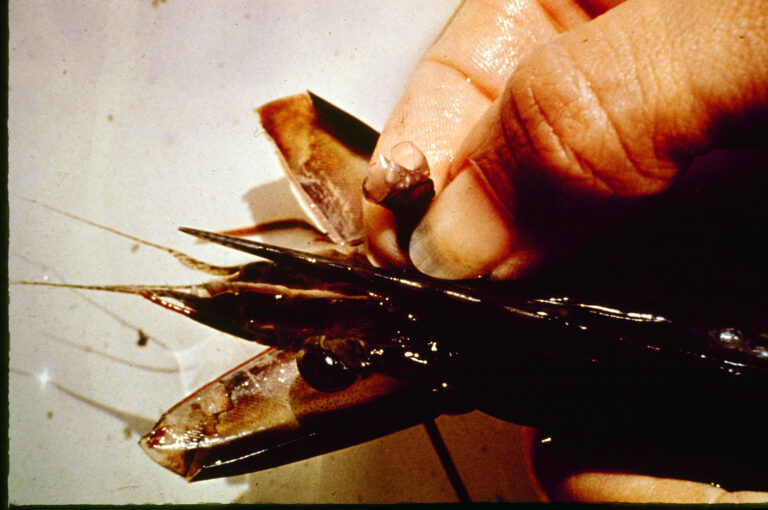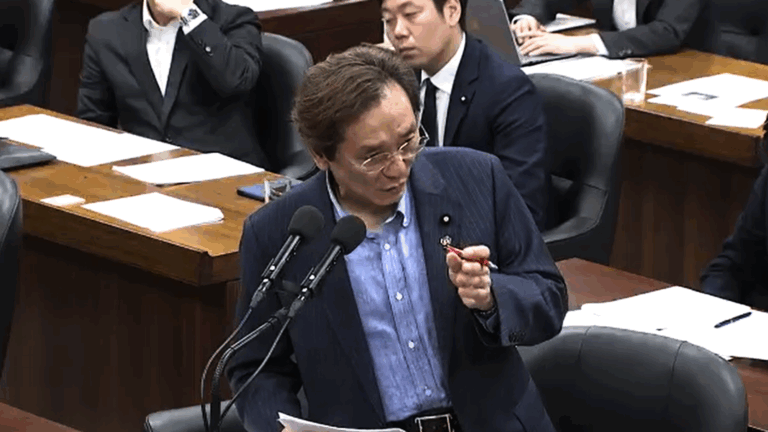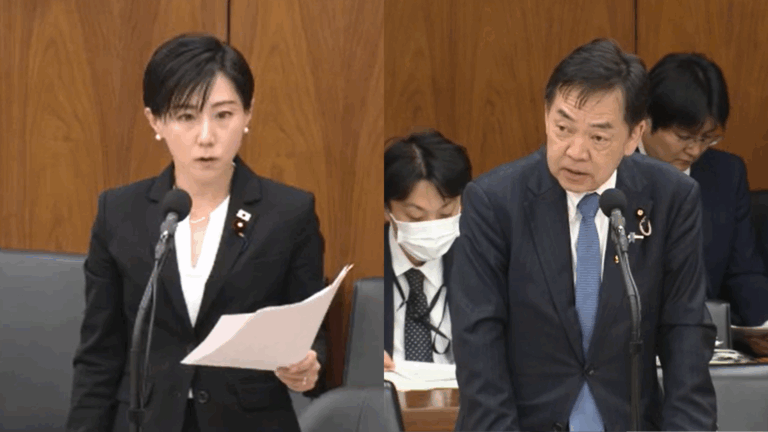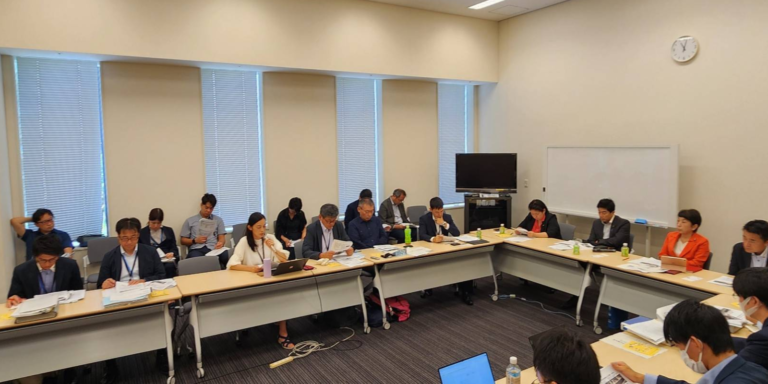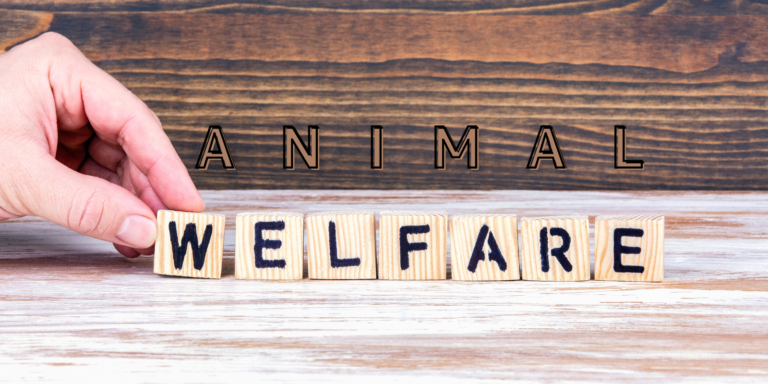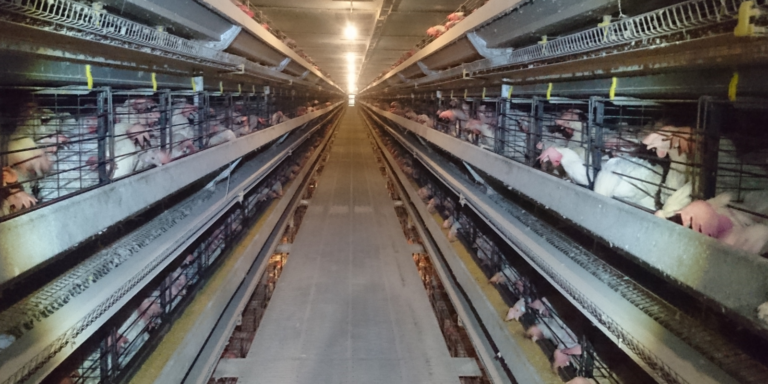The summers of 2024 and 2025 were and are predicted to be unusually hot.
Imagine.
If you are deprived of water for more than 12 hours in such a situation…. You can see that it would be very harsh and possibly deadly.
Many slaughterhouses in the country continue to place pigs, cattle, and goats in this harsh and cruel situation.
According to a 2023 survey by the Animal Rights Center, 37.82% of cattle slaughterhouses and 71.64% of pig slaughterhouses in Japan were not equipped with permanent drinking water facilities at moorings. Many slaughterhouses stated that they “use showers as a substitute for washing the animals’ bodies. Shower water is run for a short time after transport, but the water stops. The water runs off and disappears through the sloping concrete. Furthermore, the animals are blackened with their own feces and urine, and they drink the water mixed with their feces and urine. It can take as little as two hours to get to the slaughterhouse, or as long as a day. Water cannot be drunk during transport. Furthermore, 94.7% of cattle and 89.1% of pigs wait at the mooring for more than 8 hours before slaughter, while 46% of cattle and 45.8% of pigs wait for more than 20 hours. Contrary to the physiological ecology of the animals, water deprivation is animal cruelty and may lead to charges of animal cruelty if further debilitation occurs.
The Animal Rights Center submitted a request to 82 slaughterhouse establishments that we believe do not have drinking water facilities. This includes 26 municipal slaughterhouses and many public corporations and cooperatives that were created with most of the costs funded by the municipalities. Even if they are private facilities, slaughterhouses operate under the Slaughterhouse Law and have a large public aspect, with inspections conducted inside by public officials. Citizens should speak out louder against such facilities continuing to engage in potentially animal abusive practices. We have been conducting a survey in the form of a questionnaire without naming individual operators, but in light of the slow progress, we have submitted (by mail) this request on the premise that the contents of the survey, including whether or not responses were received, will be made public. We will announce the results of the survey around that time.
Please join us in making your voice heard for the animals who cannot even drink water and are waiting to be killed.
Request for installation of permanent drinking water facilities at moorings in your slaughterhouse
*This is not the case due to individual changes.
Dear Sir
We hope that you are enjoying the beautiful autumn weather and that your company is doing well.
We are a citizens’ group that continues to make recommendations to citizens, businesses, and politics to improve animal welfare for livestock animals.
Now, we are aware of the problem that many slaughterhouse moorings still do not have permanent drinking water facilities for animals to be slaughtered.
The act of cutting off drinking water is an act that affects the animal’s health and may even constitute animal cruelty, even before issues such as animal comfort.
We would like to ask the following questions and make the following requests regarding the status of the installation of permanent drinking water facilities at the moorings of your slaughterhouse.
We appreciate your consideration and would appreciate your response by October 31, 2025.
The reasons why all slaughterhouse moorings must have drinking water facilities at all times are as follows
1: For violating the regulations of the World Organization for Animal Health (WOAH International Animal Health Secretariat)
WOAH (World Organization for Animal Health) Animal Welfare Code Article 7.5.3 The design and construction of moorings shall include the following provisions: “Drinking water shall be available to animals at all times and the method of provision shall be appropriate for the animals to be moored. Mooring tanks shall be designed and installed so as to minimize the risk of contamination by feces, so as not to pose a risk of bruising or injury to the animals, and so as not to impede their movement.” The regulation stipulates that This indicates that there must be a dedicated drinking fountain where the animals can drink at all times, rather than lick off water from showers, etc.
2: To comply with the guidelines of the Ministry of Health, Labor and Welfare
According to the “Guidelines for Slaughterhouse Facilities and Equipment” (Eiryoku No. 97, June 23, 1994), it is desirable for slaughterhouses to be equipped with such facilities. Even though there is a transition period, this guideline was issued 31 years ago in 1994, and the fact that it is not currently in place can be regarded as an indication that there is no intention to comply with it. The government has already taken a stance, and the risk of non-compliance lies entirely with the individual slaughterhouses.
3: Installation process in Japan
Our survey conducted between May and July 2023 revealed that 37.82% of cattle slaughterhouses and 71.64% of pig slaughterhouses in Japan do not have drinking water facilities for cattle and pigs at their moorings. However, in recent years, major meat companies such as Starzen, Nippon Ham, Itoham Yonekyu Holdings, and PrimaHam have installed constant drinking water facilities in their slaughterhouses. These companies installed them soon after we made individual requests, and when we checked the costs, they were realistic. In short, the installation of permanent drinking water facilities is something that should be done as soon as possible, and it is possible.
4: Animal health hazards due to lack of drinking water
Deprivation of water can cause hypernatremia and salt intoxication, blindness, dizziness, head banging, pushing against walls, ataxia, seizures, laminar cortical necrosis, cerebral edema, perivascular infiltration of eosinophils in the brain and meninges, anorexia, dehydration, electrolyte abnormalities, metabolic stress, renal stress and circulatory failure, and may lead to death.
Furthermore, according to the Japan Meteorological Agency, the average temperature in Japan has risen +1.4°C in 100 years, especially in 2024, and this year has been so hot for so long that it may be a disaster. With another 4.5°C temperature increase predicted, livestock production itself is at risk, and there is an urgent need to respond on farms. The risk of heat stroke increases every year. The idea that it is okay for animals to survive until slaughter is not a good one for those of you who are in the business of animal life. The use of animals is an ethical responsibility.
It is unthinkable that animals that finally make it to the slaughterhouse are left without even water.
5: Possible penalties under Article 44(2) of the Law on the Protection and Management of Animals.
As mentioned above, cutting off drinking water necessary for physiological ecology falls under the “act of recklessly stopping the feeding or watering of animals and debilitating them, or restraining them in a place where it is difficult to maintain their health and safety and debilitating them” under Article 44, Paragraph 2 of the Animal Protection and Management Act, and may be punishable by animal cruelty penalties. Considering that the WOAH global standard stipulates constant drinking water and that many slaughterhouses in Japan have already installed constant drinking water facilities, this could be considered an act of wanton cruelty. It is also easy to predict that some animals will become weak if they are deprived of drinking water, and even if this is unintentional, it constitutes willful misconduct. Failure to provide drinking water facilities at all times and to do so illegally means that your compliance with the law is weak. This is a serious risk to your slaughterhouse and your clients.
Delays in animal welfare practices at slaughterhouses, or the presence of abusive animal conditions, can pose a risk to companies that source livestock products. Animal welfare is becoming a “must improve” issue for food companies; the OECD Guidelines for Multinational Enterprises now include animal welfare. Listed companies are required to disclose their animal welfare practices as non-financial information (SASB). While the world is rapidly improving animal welfare, Japanese livestock products cannot afford to stand still.
Does your slaughterhouse have facilities for drinking water for pigs and cattle at all times? Please note that not only is it impossible to inoculate the proper amount of water with water from showers, it is also impossible to drink hygienic water.
In the unlikely event that it has not yet been installed, when is it scheduled to be installed?
We would also like to request that the water be made available for drinking at all times as soon as possible, and we strongly urge you to take prompt action.
We look forward to your response.


